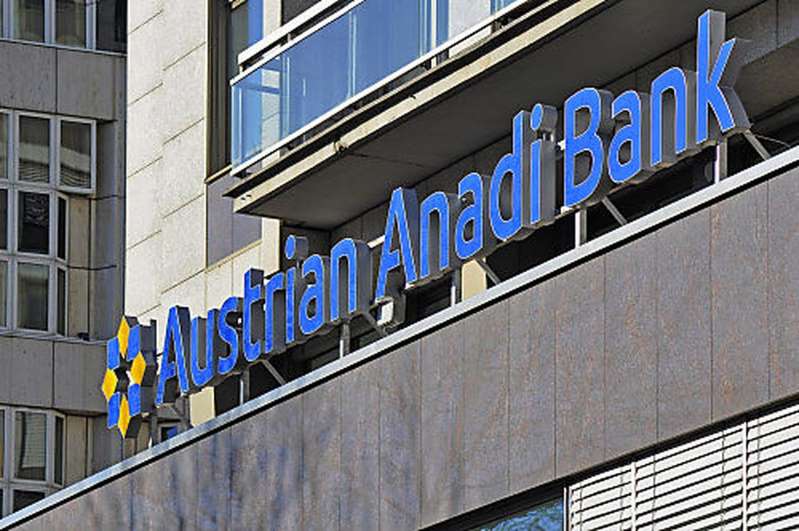![Kärntner Bank pushes abroad [premium]](/wp-content/uploads/2021/02/kaumlrntner-bank-draumlngt-ins-ausland-premium-7fd80bc.jpg)
The Wulfenia was supposed to connect two worlds: the proud Carinthian identity with the Indian homeland of the new owner. Seven years ago, the Indian businessman Sanjeev Kanoria presented the logo of his new bank based on this mountain flower. He had acquired it for 65.5 million euros, around half of the book value. The trained transplant surgeon also changed the name to Austrian Anadi Bank. Because the old name – Hypo Alpe Adria – did not awaken the best associations after the biggest banking scandal in Austria.
Last year of transformation
In the meantime, Anadi Bank has left the legacy of Heta settlement behind, but successfully coming to terms with the past is not a business model for the future. Especially in a market in which regional banks like Hypos find it difficult to position themselves well and operate profitably. Anadi Bank – which incidentally did not inherit the adventures in the Balkans, but only the Austrian business of Hypo Alpe Adria – was just able to balance the balance sheet in 2020.
“We promised and delivered the black zero,” says Anadi boss Christian Kubitschek. After a loss of 21.5 million euros in the previous year, this can of course be booked as a success. The balance sheet total fell by 16 percent to 2.57 billion euros, the number of customers was 57,000. Kubitschek has only been at the helm of the Klagenfurt Institute for about eight months, but would like to bring it back into profitability soon. “2021 will be the last year of our transformation,” says the 51-year-old. That means: a better result can only be expected from 2022.
“Piranha Strategy” in Germany
Until then, areas with low margins should be sold, processes digitized, and new markets and business areas opened up. The plan to expand to Germany amid the pandemic is likely to be the most interesting. From the beginning of April, Anadi Bank will offer small and medium-sized enterprises (SMEs) working capital loans of 50,000 to 150,000 euros, and later also 250,000 euros. Consumer loans will follow in the second half of the year.
These two areas should bring a loan volume of around 130 million euros within three years, says Kubitschek. Everything online, without branches, with partners. “As a German, I know the market and the relevant players. We call this the piranha strategy: we hop over into the pond and grab the fillet pieces, ”says the man from Lower Bavaria.
Is this going to be in direct competition with Bawag, which is also fighting for market share in southern Germany? “No,” says Kubitschek. “If we're a piranha, the bawag is a barracuda.”
Downsizing in Austria
While Anadi Bank wants to grow in Germany, capacities are being reduced in Austria. At the end of January the only branch in Graz was closed, two remained in Vienna and eleven in Carinthia. Personnel is also being steadily reduced: last 247 employees were employed at Anadi, by the end of the year there should be 225. When Kanoria got in at the end of 2013 and promised not to cut any jobs, it was 430. The savings package cost the bank 6.5 million euros last year. Around five million of this was due to severance payments under the social plan. Almost four million have been invested in process optimization and IT.
That worsened the already high cost-income ratio by three percentage points to 89.7 percent. “If you factor out the investments, we're south of 80 percent. We want to get to 60 percent in the next three years, ”said Kubitschek.
Triple consumer credit
In addition to new business in Germany, this is to be achieved with a stronger focus on a lucrative but volatile business area: consumer loans. Foreign banks like Santander or ING have proven that you can make money with it in Austria. Anadi Bank took this direction a few years ago and is also recording the greatest growth in new business here. However, it should come as no surprise that demand for consumer credit is weak during a crisis and therefore does not contribute much to the result.
Nevertheless, Kubitschek wants to triple the volume of consumer loans from almost 100 million to around 300 million euros in two and a half years. “I know consumer credit inside out, I've already done it at Deutsche Bank, Sberbank and Addiko,” says the Anadi boss. The growth should come primarily via online and from Germany.
Bank failures weigh on earnings
A stable pillar for Anadi is their status as the main bank of the state of Carinthia. As a former hypo, it finances around two thirds of all Carinthian communities. The loan volume is around EUR 600 million. “I know how important the handshake is in this area. Financing the public sector is a top priority, ”says Kubitschek. In the current annual report, however, this portfolio is described as “maturing”.
As far as the consequences of Corona are concerned, Kubitschek does not see his bank at risk: The business share in affected sectors such as tourism and trade is comparatively low. In 2020, three million euros were already written off. Nevertheless, the higher risk has increased non-performing loans (NPL) by a third to EUR 85.8 million. The NPL ratio thus deteriorated from 2.4 to 3.7 percent. The insolvency of Commerzialbank Mattersburg and Anglo Austrian Bank also cost Anadi Bank EUR 1.1 million.

